Bengali cat diseases
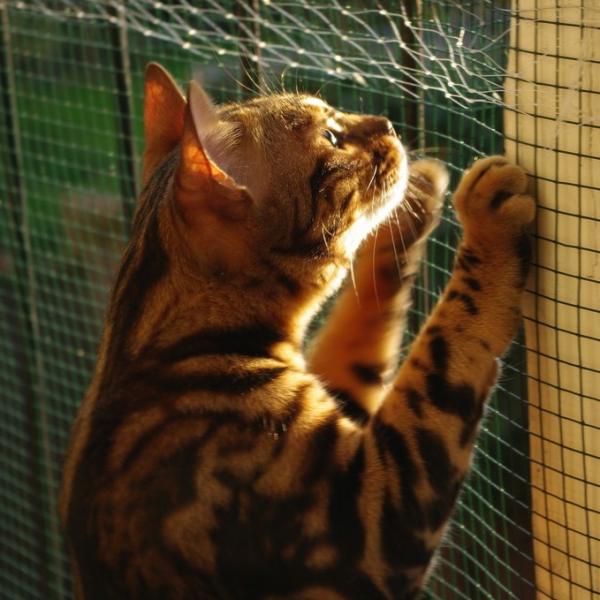
If you are the companion of one of these domestic cats with a coat so similar to that of their relatives the wild cats, you will be interested to inform you well about the possible diseases that your faithful friend can suffer.
We must remember that the best form of prevention for any disease are the routine and complete visits to our trusted veterinarian, where they will know our cat well, they will perform all the necessary tests both to prevent and to detect diseases early and administer the vaccines necessary preventive
Keep reading this new article and discover what are the Bengali cat diseases to be able to prevent or detect them and act as soon as possible.
What types of diseases does the Bengali cat usually suffer from?
This breed of domestic feline can suffer from any of the general diseases in this species, which we already described in another article in which we talk about the most common diseases in cats.
In addition, these domestic felines with physical appearance more wild than others of the same species, they suffer from more specific diseases. It seems that, these cats are prone to several genetic diseases, which must be detected in time to prevent the reproduction of felines that suffer and shorten the number of affected by them, in addition to help the cat that Suffer them as soon as possible in the best possible way.
Next, we will expose these diseases, which is good that we know in advance for prevention.
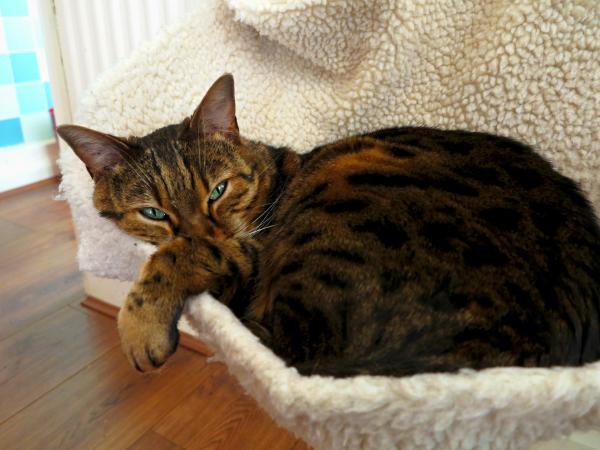
Patellar dislocation in bengal cats
Is a joint problem that some felines suffer, but that is more commonly found in this breed in particular of domestic cat. It occurs when the patella moves out of place, leaving the joint and can occur in different degrees.
Although it is important to remember that cats always have some laxity in all their joints, the case of a patellar dislocation is due to deformations of genetic origin in the patella or joint itself, or accidents. It may be that the joint is repositioned with only a slight movement, but this will continue to happen to our cat if we put a remedy, or it may not be repositioned alone and we should go to the veterinarian to return it to its place, with the least possible pain .
The veterinarian must perform the necessary tests: palpation with slight movements to check the joint, x-rays, ultrasound, etc. From there, you can diagnose the cause of the dislocation, it may be that you have a solution through an operation or that there is no solution other than to prevent it from recurring. It is possible that they will prescribe some medications to administer for a time to our faithful friend, among whom we will find anti-inflammatories.
In addition, they may recommend a series of physiotherapy sessions.
But how to reduce the chances that our cat will suffer a dislocation again? We should start by helping you reduce your weight if you are overweight or obese. In addition, we should try to make the exercise you perform smoother than what you did up to now. Discover also in exercise for obese cats. We can also strengthen your ligaments, tendons, joints, etc. with a specific diet recommended by our trusted veterinarian.

Hypertrophic cardiomyopathy in Bengal cats
It is a heart condition which commonly affects this cat breed. The muscle of the heart becomes larger, that is to say that it widens, and causes that the organ in himself has to make an effort more in carrying out his work. The most visible symptoms of this disease are lethargy and gasps that we can observe in our faithful companion. This cardiac problem tends to occur more in elderly individuals, because it begins to develop after a long time of work and effort by the heart muscle.
After manifesting this disease, other health problems usually arise, which can be more or less serious. A couple of these secondary problems are thrombosis or the production of blood clots which, in turn, can cause many other serious problems, and congestive heart failure, which ends up leading to the death of the animal.
In this case, the only thing we can do is that as soon as we detect the symptoms no matter how slight they seem to us let’s go to the vet. This will confirm what happens to our faithful feline and will offer us possible solutions to alleviate the pains and problems encountered. In the case of this heart disease there is no solution that reverses the problem. Therefore, we can only adjust diet, exercise and daily life from our cat to your new health problem, along with the guidelines and medications prescribed by our trusted veterinarian.
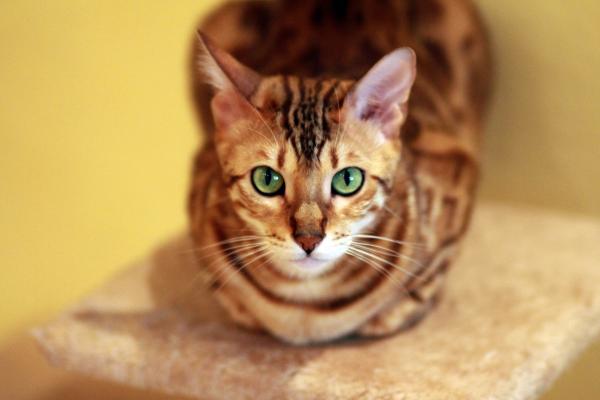
Anesthetic allergies in the Bengali cat
Most of the living beings suffer from an allergy throughout our lives, whether chronic or punctual. In the case of Bengal cats, they have a propensity to allergy to anesthesia, so if we know that our Bengali must go through an operation with anesthesia, we should discuss it deeply with the veterinarian beforehand to weigh all the possible options before the operation.
In case the operation is the only feasible solution, make sure that the anesthesia used is the most appropriate. Perhaps, for these cases it is better to refer to a veterinarian specialized in domestic cats, instead of a veterinarian of domestic animals that covers more fields.
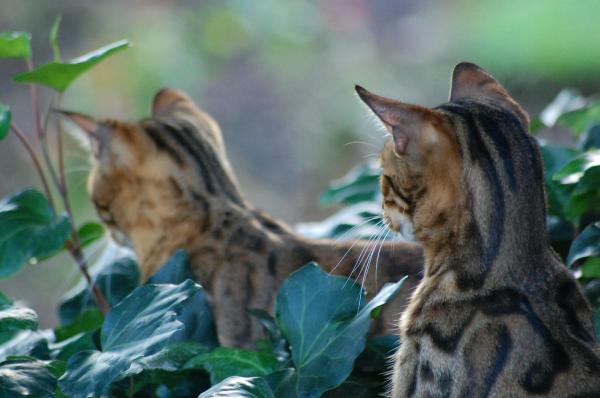
Progressive atrophy of the retina in Bengal cats
This ocular disease is genetic but impossible to detect for the owners of the animal until it manifests. The carriers of the gene may suffer from the disease, or they may be asymptomatic, so the latter will pass it on to their descendants without our knowing it previously. This atrophy of the retina can begin to show since the cat is very young.
What this disease does is to deteriorate the cones and the canes of the retina of our cat, until ending up causing blindness with the passage of time. In addition, flare cats, over the years are also prone to create cataracts, but these can become operable.
We can see that our Bengali feline is suffering from an eye problem if we observe his eyes at the same time as his behavior. Physically, depending on the problem that arises, we can get to see some change in the eyes and as for the behavior, we will observe that our faithful friend is more clumsy, more distrustful, etc.
As soon as we detect something that could make us suspect an eye problem, we should go immediately to our trusted veterinarian. Well, there you will perform the relevant tests and know what problem is that has appeared, whether it has begun to manifest a progressive atrophy of the retina, a cataract or any other eye problem, thus act as soon as possible to solve it or to alleviate the process of illness to our faithful companion if it is not reversible.
So far, the article on Bengali cat diseases. If yours has suffered any of these problems or another that does not appear do not hesitate to tell us, other users will thank you.
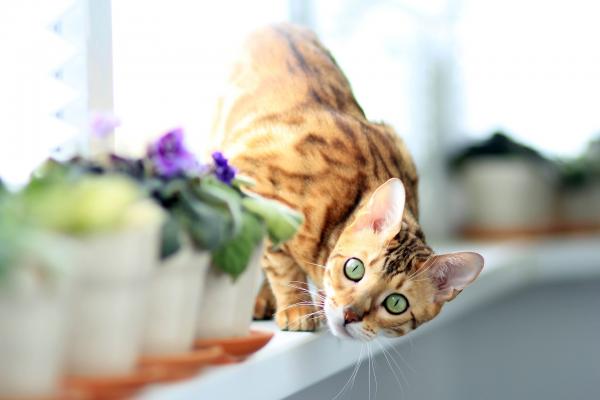
This article is merely informative, in .com we do not have the faculty to prescribe veterinary treatments or make any kind of diagnosis. We invite you to take your pet to the veterinarian in case of any type of condition or discomfort.
If you want to read more articles similar to Bengali cat diseases, we recommend that you enter in our Prevention section.


